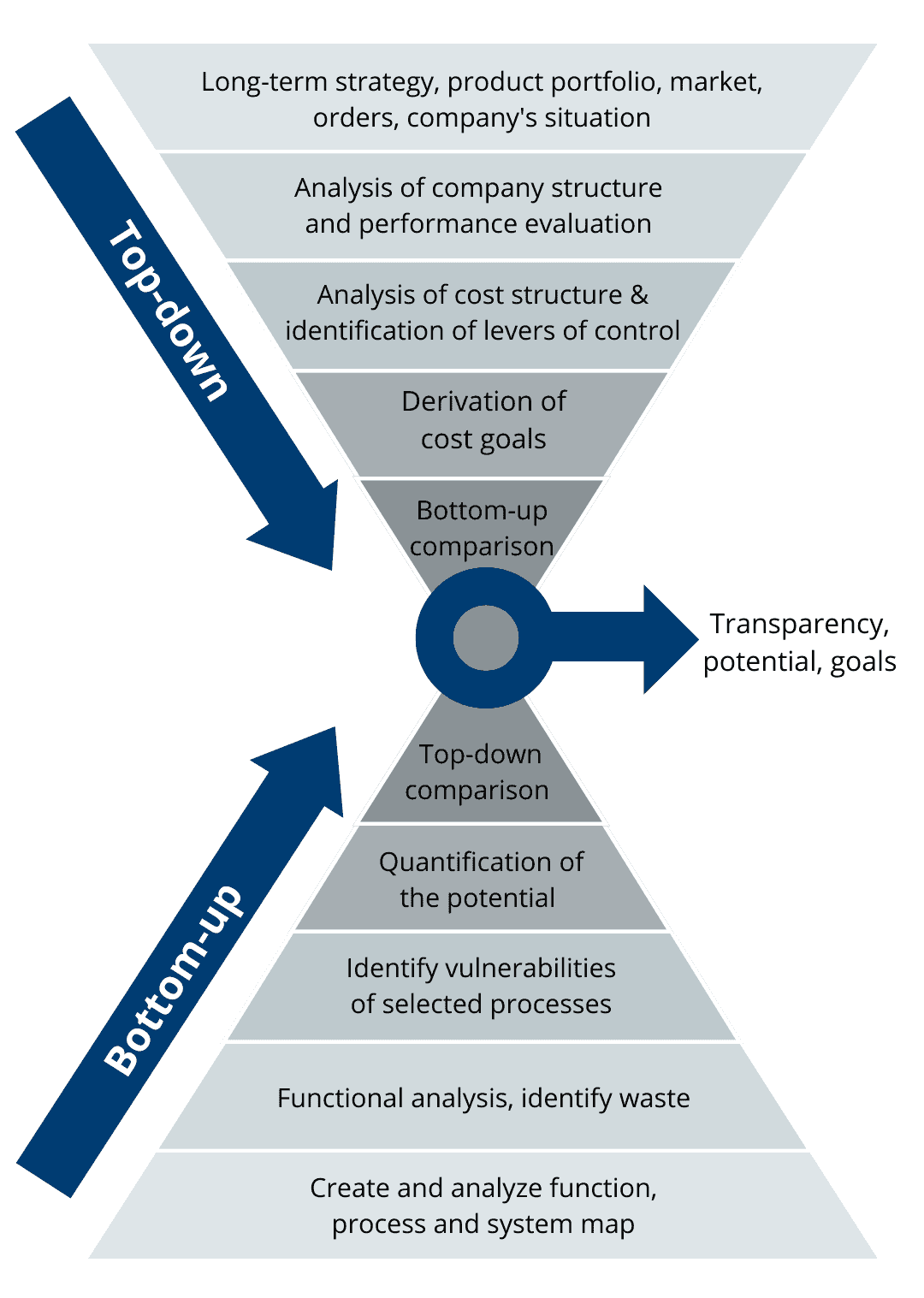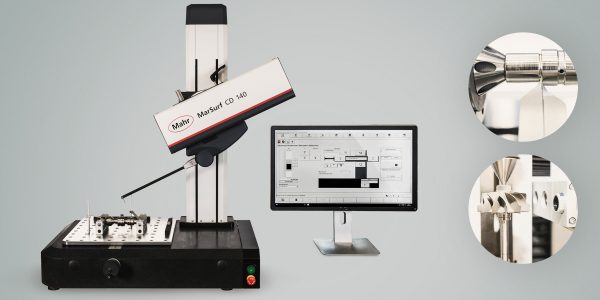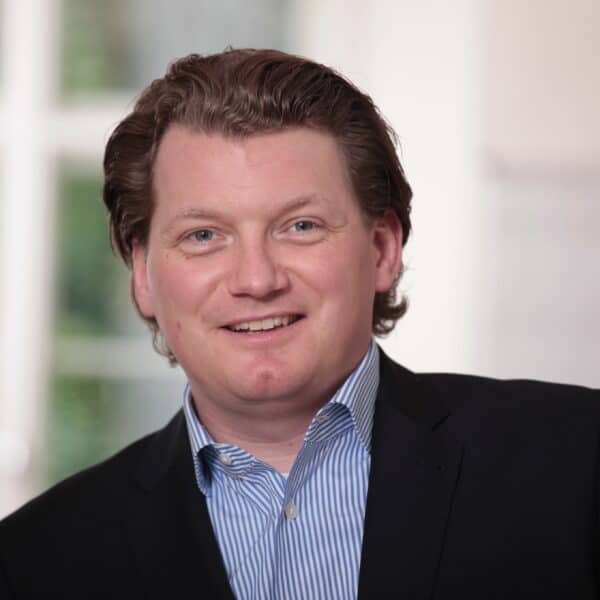
All signs in the German economy are pointing to recession. So where can companies start to build up more resilience despite the challenges and enormous cost pressure? What can they do to strengthen their competitive strength over the long term? Staufen experts Christian Möllers and Christian Sprenger respond to the most pressing questions.
Mr. Möllers, Mr. Sprenger, together you have been consulting medium-sized companies for more than 25 years. How do you assess the current situation there?
Christian Möllers: The war in Ukraine has hit companies hard. After all, while everyone is still hard at work trying to get a grip on the COVID crisis with the problems it has caused for global supply chains, the explosion in energy costs has pulled the rug out from under many virtually overnight. Many companies expect business to deteriorate even further over the next few months, and they worry about getting into financial difficulties.
Christian Sprenger: There were absolutely growth impulses and effects from trying to catch up from the lock-downs in the year’s first half. Yet the energy price crisis, persistent supply chain problems, and the sharp rise in inflation, combined with a weakening global economy overall, are not exactly fueling optimism right now.
First the COVID-19 pandemic, now the energy crisis and growing inflation rates: Are companies slipping from one crisis into the next more or less unprepared?
Christian Möllers: Neither the pandemic nor the energy crisis and the accompanying rise in inflation were predictable. Similarly, today we cannot predict when the next crisis will come. Still, the crises have shown just how challenging these times are. Climate change, geopolitical risks, and legal changes are only a few factors that may trigger more crises. What is important is that companies put themselves in a position where they can quickly and efficiently find solutions to emerging challenges and make proactive decisions. Many companies still only respond once the crisis is already in full swing.
For some companies, today’s crisis is a real challenge, depleting their financial reserves. Is their only option now to make rigorous cuts to get through the next few months?
Christian Sprenger: No, that’s really too short-sighted and certainly not sustainable. Instead, we need to look for ways to become more resilient, to strengthen our long-term competitive position, and in doing so, take the shock out of any crises that might crop up. We cannot achieve this by adopting a blunt cost-cutting approach with a red pencil. It fails to distinguish between value creation and waste, and it does not take a hard look at the company’s own strategy and business model.
But what can companies do to counter the current cost pressures?
Christian Möllers: Long-term strategy and quick results are not mutually exclusive. This is why the holistic Staufen approach to sustainably boost competitive strength focuses on operational excellence and on eliminating or reducing waste. In its core, it is about honing one’s own strategy, establishing lean processes, and increasing efficiency. This is always done by taking into account existing megatrends such as digitalization and automation.
Can this approach reduce costs in indirect area as well?
Christian Sprenger: Unfortunately, the terms lean management and lean processes are still predominantly linked to the area of production. In fact, though, it is precisely the indirect areas that have the potential to make a significant contribution to improving results through streamlining. This means, of course, that we first have to identify the cost drivers and make them controllable again. They can be inefficient functional and cross-functional processes, for example, or a bloated range of products with a sprawling number of variants.
What is Staufen’s approach to making an improvement program a success?
Christian Möllers: As part of numerous improvement projects, our combined approach has stood the test of time. The existing corporate organizational and cost structures are analyzed from the top down. Areas for action that are identified like this are scrutinized in more detail using in-depth bottom-up process analyses that we use to derive, categorize and, above all, prioritize improvement measures. We benefit in particular from our consultants’ many years of experience in the industry, which allows us to act at eye level.
As a consultant, what steps do you take to ensure that the recommended measures are actually implemented.
Christian Sprenger: At Staufen, we maintain a very efficient and effective project management system that we continuously refine and sharpen. Using the results of the analysis, function-related and cross-functional action areas are identified, quantified, and subsequently incorporated into a short- to long-term roadmap. Our TIP, the Tactical Implementation Plan, then helps us to operationalize the roadmap. It defines specific timetables for which work packages and measures can be implemented by when and by which managers. A severity model is also used to track the realization of the potential. We regularly monitor progress, address deviations in project meetings and steering committees, and promptly initiate countermeasures. Beyond that, Staufen consultants help with the implementation in a hands-on mentality that has proven itself many times over. Customers can convince themselves of this with the realization of the first quick wins as early as in the analysis stage.

What happens once a project like this has come to an end?
Christian Möllers: We at Staufen focus not only on setting up lean processes, but also on developing the people within the company. Management coaching and training for the team help to anchor lean and change expertise. Training what are referred to as multipliers means that the lean and change methods can be rolled out seamlessly once we, as consultants, have left the yard again.

Christian Sprenger
Partner
STAUFEN.AG

Christian Sprenger
PartnerSTAUFEN.AG
After finishing his studies of business administration with focus on Corporate Finance and Management at the universities of Tübingen and Mannheim Christian Sprenger worked for the Wintergerst Societät für Unternehmer-Beratung for four years. There he accompanied various restructuring, growth and reorientation projects as well as M&A processes, primarily in the area of production companies. Christian Sprenger’s expertise especially lies within the field of Working Capital Managements as well as the analysis and development of integrated financial plans and financial modeling.
Read moreMORE ABOUT THE TOPIC

Cost reduction
In this tense financial situation, how can companies reduce their costs without robbing themselves of future prospects?
Read more
Polished and professional
With its camera-controlled hoeing machine, the Dutch company Steketee has built a name for itself as a niche provider in agricultural weed control – and so was a perfect fit for the portfolio of the agricultural heavyweight LEMKEN. In order to meet the process standards and KPIs customary at its new German parent company as quickly as possible after the take-over, Steketee’s Managing Director, Iljan Schouten, set to work with Staufen to restructure the company. With success! And to ensure that the company can continue on its growth trajectory, Steketee will even move into a new factory in the year ahead. Goed gedaan! Well done!
Read more
The re-measurement of the world
The Mahr Group didn´t want to rely on past successes, but instead to use its strong position to rework its inventory management and product portfolio. Together with a team of consultants from Staufen AG, this manufacturer of measurement instruments in Göttingen was able to achieve its ambitious goals.
Read more


